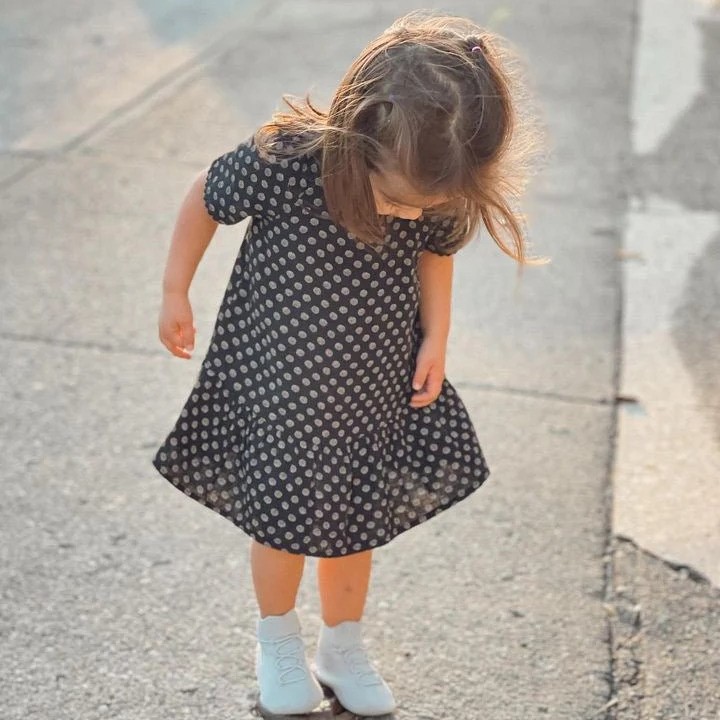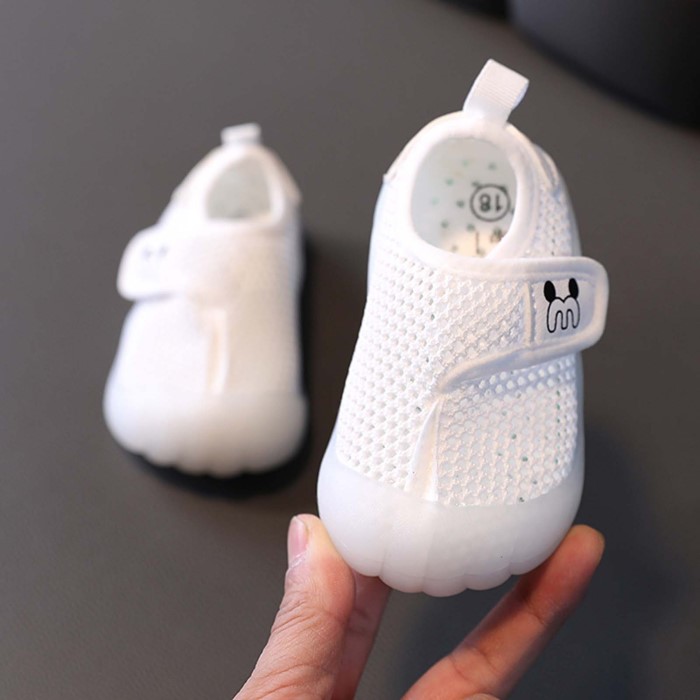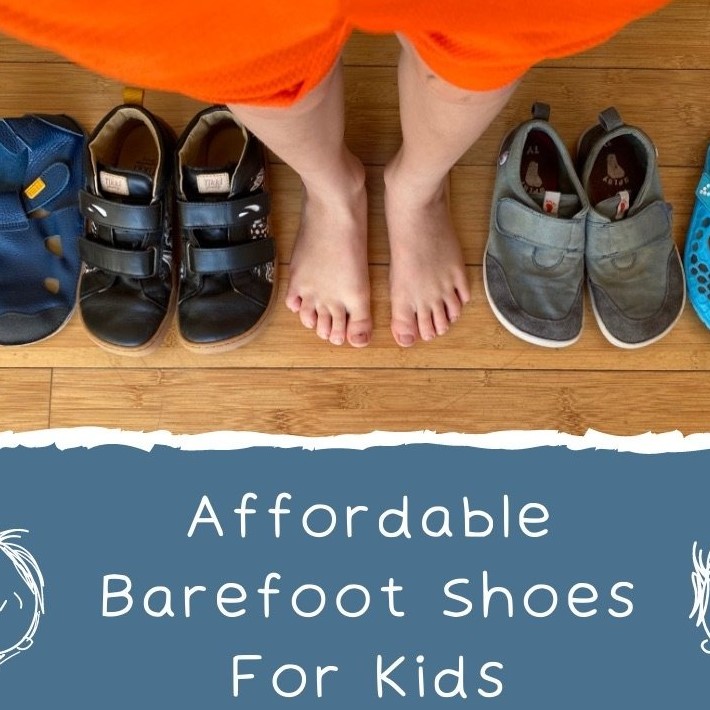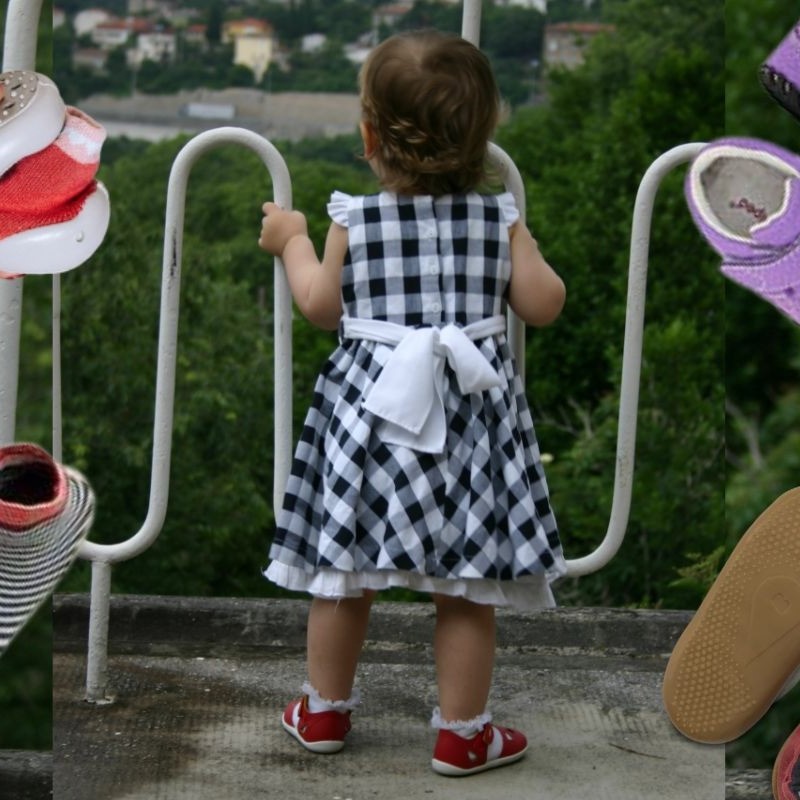What Are Barefoot Shoes for Toddlers?
Barefoot shoes are designed to mimic the feeling of walking without shoes. They help toddlers feel the ground while protecting their feet. Understanding barefoot toddler shoes features and benefits is key to making the right choice.
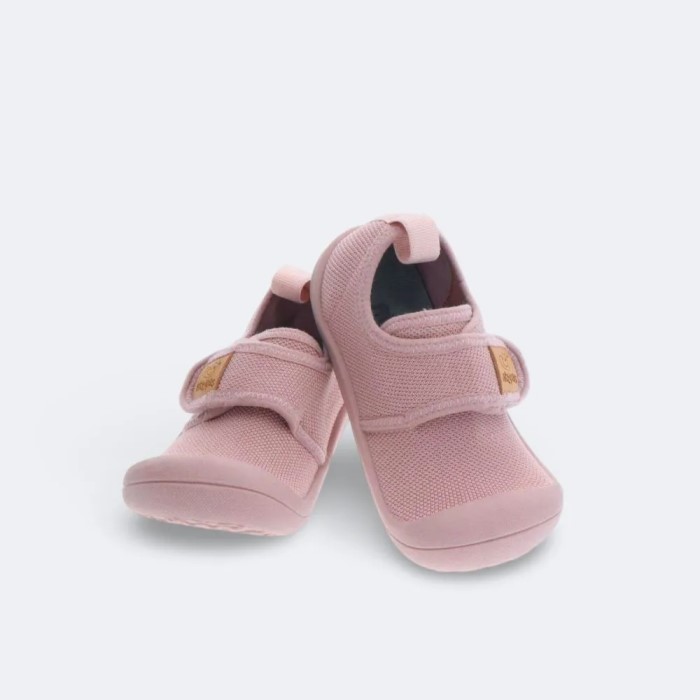
Definition and Features
Barefoot shoes are lightweight, flexible, and have thin soles. These features allow toddlers to move their feet naturally. The wide toe box gives growing toes plenty of space. Additionally, the shoes are free from arch support and high heels. This promotes a more natural way of walking and standing.
Key features of barefoot toddler shoes:
- Thin soles for ground feedback.
- Lightweight design to avoid discomfort.
- Wide toe box for freedom and natural growth.
- Flexible materials for unrestricted foot movement.
- Flat soles to ensure full foot contact with the ground.
Benefits of Barefoot Shoes
Barefoot shoes have several benefits for toddlers. These shoes support natural foot movements and muscle development. With a flexible sole, toddlers can sense the ground and react quickly, improving balance.
Additional benefits include:
- Healthy foot development: Encourages natural growth and alignment.
- Better walking posture: Promotes a proper gait and improved stability.
- Enhanced sensory feedback: Helps toddlers feel connected to their environment.
- Reduced risk of foot deformities: Prevents toes from being crowded.
- Greater comfort: Lightweight and spacious, perfect for active toddlers.
Choosing barefoot shoes ensures comfort, safety, and proper foot development for your toddler. Focus on these benefits when selecting the best pair for your child.
Why Choose Barefoot Shoes for Toddlers?
Barefoot shoes are an excellent choice for toddlers. They provide benefits that support healthy foot growth and movement. These shoes align closely with the natural way children’s feet develop and function.
Supporting Natural Foot Development
Barefoot toddler shoes promote natural foot growth. With their thin and flexible soles, they allow feet to move freely. This design helps the muscles in the feet grow stronger with every step. The wide toe box ensures toes spread naturally, fostering healthy foot alignment.
By mimicking barefoot walking, these shoes improve bone and muscle development. Unlike traditional shoes, they avoid restricting the foot’s natural shape. Early use of barefoot shoes supports long-term foot health.
Encouraging Proper Walking Technique
These shoes help toddlers develop a natural walking posture. Their flat and flexible soles ensure the full foot touches the ground. This design encourages a proper gait and smoother walking patterns.
Barefoot toddler shoes improve balance by enhancing sensory feedback. Toddlers can feel the ground with each step, promoting stability. This sensory connection helps them adapt to different surfaces and walk more confidently.
Choosing barefoot shoes protects toddlers from forming bad walking habits. Their lightweight design also prevents discomfort, making each step enjoyable.
Key Factors to Consider When Buying Barefoot Toddler Shoes
When selecting barefoot toddler shoes, focus on essential features. These factors ensure comfort, safety, and proper foot development. Here’s what you need to consider:
Flexibility and Lightweight Design
Flexibility is crucial for barefoot toddler shoes. Flexible soles let feet bend and move naturally. This supports muscle development and a natural walking technique.
Lightweight designs prevent extra strain on their tiny feet. Heavy shoes can disrupt balance and comfort. Opt for shoes that toddlers can wear all day without discomfort.
Check if the sole twists easily and the upper bends with minimal effort. A flexible and lightweight shoe helps toddlers move freely and stay active.
Wide Toe Box for Comfort and Growth
A wide toe box is a must-have feature in barefoot toddler shoes. This design ensures toes can spread naturally. Proper toe spacing promotes healthy foot growth and alignment.
Crowded toes can lead to discomfort and foot deformities. Barefoot shoes with spacious toe boxes provide comfort and prevent these problems.
Measure your toddler’s feet before buying. Ensure the shoes accommodate their toes without any pinching or squeezing.
Non-Slip Soles for Safety
Safety is a top priority for toddlers learning to walk. Non-slip soles provide the necessary grip on various surfaces. This reduces the risk of falls and injuries.
Look for soles that offer both traction and durability. These ensure your toddler stays safe on uneven or slippery surfaces.
Good non-slip soles should also feel soft and provide ground feedback. This helps improve balance and confidence while walking.
By focusing on these key factors—flexibility, lightweight design, wide toe boxes, and non-slip soles—you can choose the best barefoot toddler shoes for your child.
Popular Materials Used in Barefoot Shoes
Barefoot toddler shoes are made from various materials. The choice of material affects comfort, durability, and environmental impact. Understanding these materials helps parents make informed decisions when choosing shoes for their little ones.
Breathability and Durability
Breathable materials keep toddlers’ feet cool and dry. Mesh and lightweight textiles are common choices. These materials allow air to circulate within the shoes, preventing sweat buildup.
Durability is another important factor. Barefoot shoes often use materials like leather or high-quality synthetic fabrics. These materials withstand daily wear and tear while maintaining their flexibility. They also ensure long-lasting use, which is especially important for active toddlers.
Key material points for breathability and durability:
- Mesh fabrics: Promote airflow, keeping feet cool.
- Leather: Offers durability and comfort.
- High-quality synthetics: Combine lightweight features with toughness.
Eco-Friendly and Sustainable Options
Many barefoot toddler shoe brands focus on eco-friendly materials. These include biodegradable fabrics and recycled materials. They reduce environmental impact while providing safe options for children.
Sustainable options often include organic cotton, natural rubber, or plant-based components. These materials minimize toxins and synthetic chemicals. Parents can choose shoes that align with environmental values without sacrificing quality.
Benefits of eco-friendly barefoot shoe materials:
- Organic cotton: Gentle on the skin and free from harmful chemicals.
- Natural rubber: Provides flexibility and grip without synthetic additives.
- Recycled fabrics: Reduces waste and supports sustainable practices.
Selecting barefoot toddler shoes with breathable, durable, and eco-friendly materials ensures comfort and supports both health and the planet.
Top Brands
Shopping for barefoot toddler shoes can be overwhelming without guidance. Knowing reliable brands helps you find quality footwear that supports healthy foot development and your budget. Below are some of the top choices for different priorities.
Best-Rated Barefoot Shoe Brands for Kids
These brands are highly recommended for their quality, comfort, and design:
- Bobux stands out for its durability and natural design. Their shoes support foot growth effectively.
- Wildling Shoes are known for their lightweight materials and excellent flexibility.
- Vivobarefoot offers minimalist styles with thin soles that promote sensory feedback.
- Froddo prioritizes comfort with breathable, eco-friendly materials like leather and organic cotton.
- Plae specializes in customizable barefoot shoes, making them adaptable to kids of any size.
These brands focus on features that align with barefoot principles. Parents trust their products, as these brands consistently deliver comfort and functionality while maintaining high standards for toddler foot health.
Affordable Choices for Parents
Budget-friendly options don’t need to compromise on quality. These brands deliver excellent barefoot shoes at reasonable prices:
- Mokowear offers affordable yet well-designed selections, focusing on wide toe boxes and flexible soles.
- See Kai Run provides stylish, durable shoes that fit various budgets. Their options also emphasize safety.
- Ten Little combines affordability with features like non-toxic, eco-friendly materials and wide sizes.
- Skinners markets sock-like barefoot shoes that are budget-friendly and ultra-lightweight.
- Old Soles are great value for money, focusing on non-slip, flexible, flat soles for walking confidence.
Finding affordable barefoot shoes means prioritizing simplicity in design without sacrificing the right features. Researching options from these brands will help you save money while ensuring safety and comfort for your toddler.
By exploring these trusted barefoot shoe brands, parents can easily balance quality and cost while supporting their toddler’s foot development.
Tips for Finding the Right Fit
Finding the perfect fit for barefoot toddler shoes is crucial. A well-fitted shoe supports comfort and healthy foot growth. It also prevents discomfort and potential foot issues. Below are key tips to ensure the right fit for your toddler.
Measuring Your Toddler’s Feet Accurately
Proper measurement is the first step to finding the right size. Follow these simple steps:
- Measure both feet: Feet can differ in size, so always measure both.
- Use a ruler or measuring tape: Measure the length and width of your child’s feet.
- Best time: Measure their feet after walking to account for slight swelling.
- Ensure standing position: Have your toddler stand up while measuring for accuracy.
- Double-check measurements: Confirm the measurements twice for consistency.
Compare the measurements to the shoe’s size chart. Allow extra room for growth and movement. A proper fit ensures your toddler walks confidently and safely.
Trying Shoes with Socks vs. Barefoot
When shopping, decide whether to try shoes with socks or barefoot. Here’s what to consider:
- With socks: Try the shoes with socks if your toddler wears them regularly. Ensure the socks aren’t too thick.
- Barefoot: Try barefoot for a snug fit. Barefoot testing helps you evaluate toe spacing and natural grip.
- Flexibility check: Ensure the shoes bend easily even when worn with socks.
- Check fit in action: Have your child walk or run in the shoes. Watch for natural movements.
Choosing barefoot toddler shoes requires careful consideration of fit with or without socks. Test comfort and flexibility before deciding.
By following these tips, you’ll find shoes that ensure comfort and support healthy foot development.
Maintaining and Caring
Proper care ensures barefoot shoes last longer and stay comfortable for your toddler. Regular cleaning and correct storage are essential. Following these tips will keep the shoes in top condition.
Cleaning and Storage Guidelines
Clean barefoot toddler shoes regularly to maintain hygiene and durability. Here’s how to clean them effectively:
- Wipe dirt off daily: Use a damp cloth to remove surface dirt.
- Hand wash gently: Use warm water and mild soap to scrub tough stains. Avoid harsh chemicals.
- Air dry: Let the shoes dry naturally. Avoid direct sunlight or high heat to prevent damage.
- Clean insoles separately: If removable, wash insoles to prevent odor and bacteria buildup.
For storage:
- Keep shoes dry: Store in a dry place to prevent mold and odor.
- Maintain shape: Use shoe inserts or crumpled paper to preserve their shape.
- Avoid overcrowding: Don’t stack shoes haphazardly; give them space to breathe.
How to Prolong Shoe Life
Extend the lifespan of barefoot toddler shoes with these simple practices:
- Rotate pairs: Avoid wearing the same pair daily to reduce wear and tear.
- Use appropriate socks: Lightweight socks protect shoes and prevent excess sweat.
- Check for wear: Regularly inspect soles and seams for damage and repair promptly.
- Protect from extreme conditions: Keep shoes away from water exposure or extreme heat.
Proper care not only keeps barefoot toddler shoes looking great but also ensures they remain functional and safe for your child.
Frequently Asked Questions About Barefoot Toddler Shoes
Parents often have questions about barefoot toddler shoes. These answers can help address common concerns.
Are Barefoot Shoes Suitable for All Toddlers?
Barefoot shoes are suitable for most toddlers. They support natural foot development and healthy movements. However, certain conditions may require special footwear. For example, toddlers with severe flat feet or structural foot issues might benefit from orthotic support instead.
Consult with a pediatrician or podiatrist if your toddler has unique foot needs. Otherwise, barefoot shoes remain a great choice for growing, healthy feet. They provide flexibility, a wide toe box, and thin soles, promoting natural walking patterns.
When Should Toddlers Transition to Barefoot Shoes?
The best time to start barefoot shoes is when your child begins walking confidently. Early introduction supports proper gait and muscle development. Ensure the shoes provide room for growth and freedom of movement.
Younger toddlers who are just starting to walk may also benefit. Choose lightweight, flexible, and non-slip barefoot shoes to help with balance. This can create the perfect foundation for long-term foot health.
Monitor your toddler’s walking progress. Transition gradually and ensure they adapt comfortably to barefoot shoes.
Conclusion: The Benefits of Choosing Barefoot Toddler Shoes
In conclusion, selecting the right barefoot toddler shoes is crucial for supporting your child’s healthy foot development. These shoes provide numerous benefits, including improved balance, comfort, and natural movement. By considering essential features, making wise recommendations, and fostering an environment that encourages exploration and activity, you can ensure that your child enjoys the advantages of barefoot shoes.
Investing in quality barefoot toddler shoes not only contributes to their overall development but also promotes a happy and active lifestyle. Choose wisely, and watch your child flourish in their newfound abilities to move freely and confidently!
